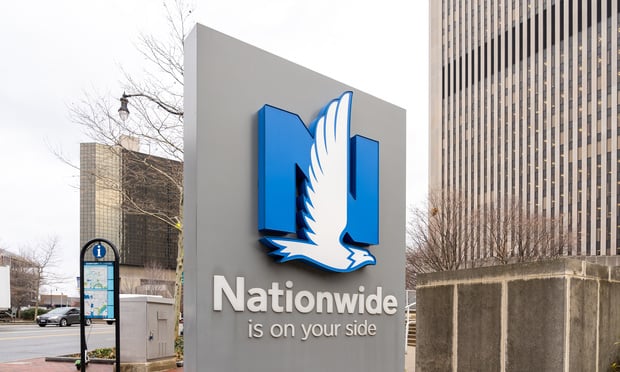 Catastrophe losses in 2011 led to the U.S. P&C industry's largest underwriting loss since 2002, according to A.M. Best. And while the latest MarketScout barometer shows that 2012 began with another month of commercial-lines rate increases, Best maintains that a true hard market is likely “at least a year or two away.”
Catastrophe losses in 2011 led to the U.S. P&C industry's largest underwriting loss since 2002, according to A.M. Best. And while the latest MarketScout barometer shows that 2012 began with another month of commercial-lines rate increases, Best maintains that a true hard market is likely “at least a year or two away.”
In a Feb. 6 special report on the U.S. P&C industry's 2011 results, Best says $44.1 billion in catastrophe losses for the year helped drive net income down 49.2 percent to $21.9 billion. In 2010, industry net income was $43.1 billion and catastrophe losses totaled $19.6 billion.
Underwriting losses are expected to total approximately $33.9 billion for 2011—the second consecutive year of underwriting losses and the third-largest annual-underwriting loss ever, behind 2001 ($56.4 billion) and 2002 ($34.3 billion).
The industry's 2011 combined ratio climbed 6.5 points to 107.5. Catastrophe-related losses accounted for 10.1 points, compared to 4.6 points in 2010. Reserve releases shaved 2.7 points off of the 2011 combined ratio, down from three points from reserve releases in 2010.
Best says it expects the impact of reserve releases to lessen going forward: “While there are select lines where reserving strength remains, A.M. Best continues to believe the overall industry's previous reserve cushion is largely exhausted because of sizable reserve releases over the past six calendar years.”
The ratings agency adds, “With overall industry-reserve redundancies expected to continue through 2012, albeit to a lesser extent, the overall reserve deficiency will continue to increase, and core, undiscounted reserves will remain inadequate.”
Despite the challenges in 2011, the industry's policyholders' surplus declined only 1.4 percent to $562.7 billion, Best says. In 2010, policyholders' surplus stood at a record $570.4 billion.
Additionally, the industry saw net-premiums written increase 3.5 percent to $442 billion.
“While the overall U.S. P&C industry demonstrated its resiliency yet again in 2011 and remains well capitalized, the year's results—and expectations for 2012—will vary by segment,” Best adds.
Looking ahead to 2012, Best says pricing continues to improve in personal lines and in catastrophe-exposed property accounts, but some commercial lines are still “fundamentally underpriced, and the segment continues to be negatively impacted by weak macroeconomic conditions and decreasing reserve-adequacy levels.”
According to online-insurance exchange MarketScout's latest monthly Market Barometer, commercial lines did see positive rate movement in January, as rates crept up by 1 percent.
“The 1 percent composite increase in January matched the increase for December 2011,” says MarketScout CEO Richard Kerr. “Workers' Compensation and Catastrophe Exposed Property continued to exhibit the largest increases with upward adjustments of 2 percent.”
By coverage class, all lines were up or flat, similar to December.
Business Interruption, which was up 1 percent in December, was up 2 percent in January. Umbrella/Excess and Commercial Auto were both flat in December and were up 1 percent in January.
Workers' Comp still showed upward momentum in January, but not as much as in December. Rates were up 2 percent in January for this line compared to 3 percent in the month prior.
By coverage class, small accounts were up 1 percent, down from 2 percent in December, while medium accounts were up 2 in January compared to 1 percent in December.
Large accounts were unchanged (up 1 percent), while jumbo accounts remained flat on a month-to-month basis.
Responding to the MarketScout survey, Meyer Shields, a financial analyst with Stifel Nicolaus, says in an analyst's note, “We see insurers' deteriorating calendar-year results as the primary catalyst for rate increases, and we expect these increases to accelerate as favorable-reserve development subsides.”
Despite the rate increases, and an expectation that 2012 will see improved operating performance, Best says in its report that a traditional hard market is still a ways off. Best says insurers “still face a challenging environment, with relatively weak underwriting results and lackluster investment returns expected to influence operating results over the next year.”
Best says its outlook for commercial lines remains negative, while personal lines and U.S. reinsurance are stable.
Want to continue reading?
Become a Free PropertyCasualty360 Digital Reader
Your access to unlimited PropertyCasualty360 content isn’t changing.
Once you are an ALM digital member, you’ll receive:
- Breaking insurance news and analysis, on-site and via our newsletters and custom alerts
- Weekly Insurance Speak podcast featuring exclusive interviews with industry leaders
- Educational webcasts, white papers, and ebooks from industry thought leaders
- Critical converage of the employee benefits and financial advisory markets on our other ALM sites, BenefitsPRO and ThinkAdvisor
Already have an account? Sign In Now
© 2025 ALM Global, LLC, All Rights Reserved. Request academic re-use from www.copyright.com. All other uses, submit a request to [email protected]. For more information visit Asset & Logo Licensing.








